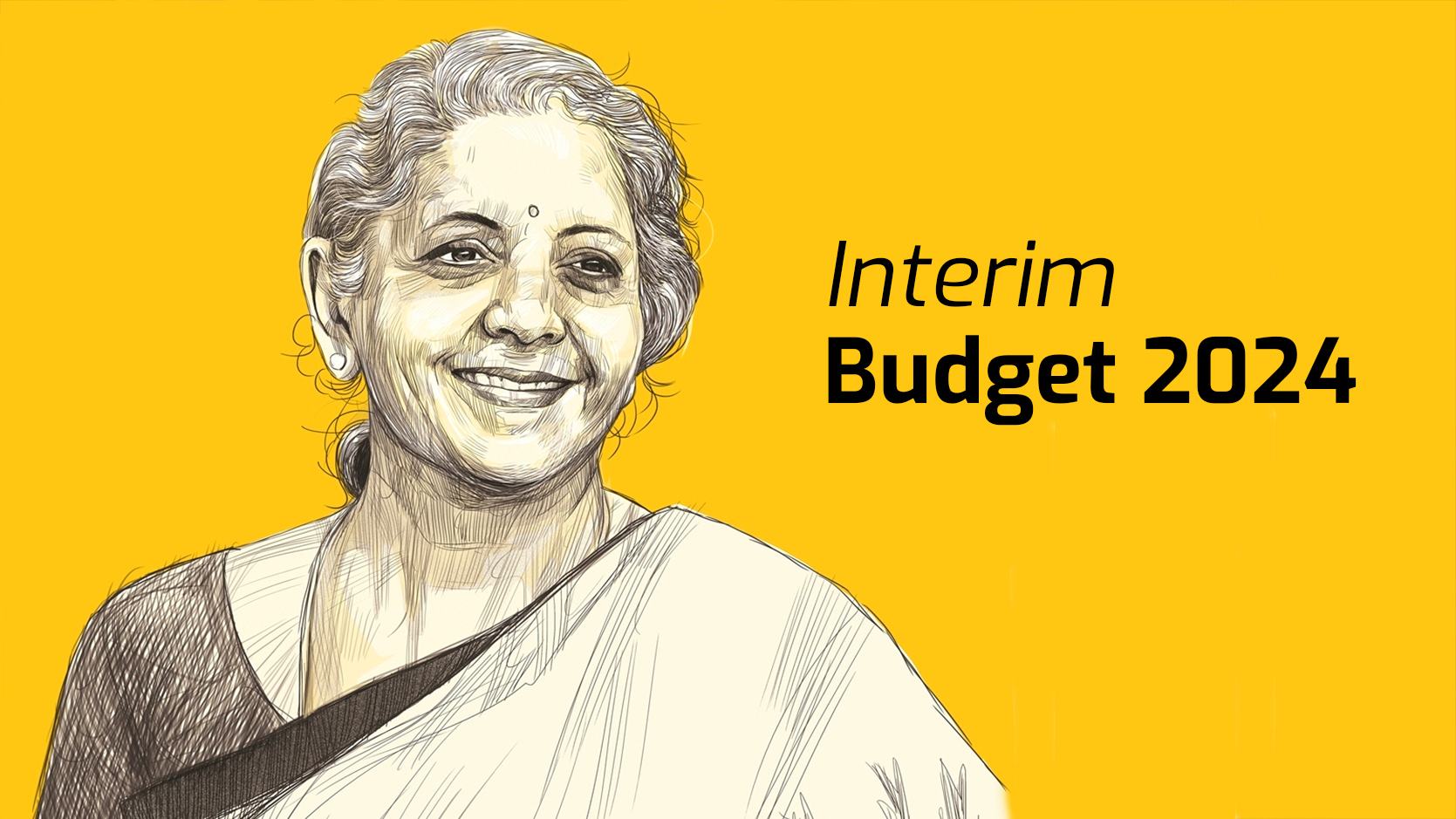International Relations
A thousand days of Ukrainian resilience
Why in News?
On February 24, 2022, the world witnessed a significant turning point in modern history, as Russia launched its full-scale military aggression against Ukraine.
Introduction
This unprovoked attack aimed at eradicating Ukraine’s sovereignty, culture, and national identity. However, over the course of 1,000 days, Ukraine, led by President Volodymyr Zelenskyy, has demonstrated remarkable resilience in the face of adversity, managing to unite its citizens and gain widespread international support.
Ukrainian Resistance: The First 1,000 Days
- Initial Predictions and the Reality: When Russia launched its offensive, many in the West believed Ukraine would quickly fall. Contrary to these predictions, the Ukrainian Armed Forces successfully defended Kyiv, reclaimed occupied territories in the Kharkiv and Kherson regions, and expelled Russian forces from the northern regions of Ukraine. Ukraine’s perseverance was fueled by national unity and the collective effort of its citizens.
- Symbolic Resistance: In April 2022, shocking reports emerged of Russian atrocities in Bucha, Irpin, Borodyanka, and Mariupol, where mass killings of civilians occurred. These cities became symbols of Ukraine’s struggle for freedom and evidence of Russia’s war crimes. During the 1,000 days, Ukraine’s armed forces evolved into one of the world’s strongest military forces, admired globally for their heroism.
The Human Cost of War
- Casualties and Displacement: Thousands of Ukrainian civilians, including over 600 children, lost their lives during the conflict. According to UNHCR data, more than 8 million Ukrainians sought refuge abroad, with over half returning to their homeland. The war also caused approximately 7 million people to become internally displaced.
- Prisoners of War and Deportations: The war saw the successful return of over 2,500 prisoners of war and civilians through exchanges. However, thousands remain in captivity under harsh conditions. The International Criminal Court issued an arrest warrant for Russian President Vladimir Putin due to the illegal deportation of more than 20,000 Ukrainian children.
- Cultural and Educational Destruction: Russia deliberately targeted Ukraine’s infrastructure, destroying over 3,700 educational institutions, 1,700 medical facilities, and more than 2,100 cultural heritage sites. The World Bank estimates that Ukraine’s economic losses exceed $400 billion, with reconstruction costs projected to be around $500 billion.
Russia’s Losses and International Isolation
- Military Losses: Russia’s military campaign has resulted in substantial losses, with approximately 722,440 Russian soldiers killed or wounded, far exceeding the total military personnel of many countries. Additionally, Russia has lost thousands of tanks, armored vehicles, artillery systems, and aircraft. The war’s cost to Russia’s military infrastructure has been immense.
- Economic Impact on Russia: Despite being labeled as the second-largest military power globally, Russia has suffered severe economic setbacks. International sanctions have significantly impacted Russia’s industries, with over 1,000 global companies ceasing operations in the country. Furthermore, Russia’s IT and engineering sectors have been hit hard due to the mass exodus of skilled professionals. The country’s GDP growth has stalled, and its currency has faced unprecedented devaluation.
- Political and Diplomatic Fallout: Russia’s global influence has diminished drastically. Key international bodies such as the Council of Europe have suspended Russia’s membership, and it faces growing diplomatic isolation. The Kremlin’s reputation has been tarnished, and only a few nations, like North Korea, continue to openly support Russia.
Ukraine’s Path to Peace
- The Global Struggle for Justice: Ukrainian resistance is not merely a fight for survival but also a defense of European values, democracy, and justice. Ukrainian President Volodymyr Zelenskyy has emphasized that neutrality in this conflict is not an option, stressing that standing with the aggressor undermines global unity. Ukraine’s defense of its sovereignty aligns with international law and is crucial for maintaining global stability.
- Reflection on Mahatma Gandhi’s Ideals: Had Mahatma Gandhi been alive today, his philosophy of non-violence and his advocacy for justice would undoubtedly have led him to support Ukraine’s struggle for freedom. Gandhi’s belief in the moral right of oppressed nations to resist domination mirrors Ukraine’s resistance to Russian aggression.
Conclusion
As Ukraine continues to rebuild its war-torn nation, the unity of its people and the support of its international allies remain pivotal. The war in Ukraine is not just a regional conflict; it is a struggle for the principles of democracy, justice, and territorial integrity that underpin the modern world order. Ukraine’s 1,000 days of resilience offer a powerful testament to the strength of the human spirit, unity, and international solidarity in the face of tyranny.
Social Issues
A community on the margins, its hidden scars
Why in News?
The Netflix series Heeramandi, directed by Sanjay Leela Bhansali, portrays the lives of courtesans in pre-Independence India, capturing the complexities of their profession, societal pressures, and their quest for dignity and freedom.
Introduction
The Netflix series Heeramandi, directed by Sanjay Leela Bhansali, portrays the lives of courtesans in pre-Independence India, capturing the complexities of their profession, societal pressures, and their quest for dignity and freedom. Set in Lahore’s red light district, it sheds light on the often-overlooked mental health struggles of sex workers, a reality that continues to resonate today.
Sex workers globally face profound mental health challenges, exacerbated by societal stigma, violence, economic pressures, and social isolation. While the discourse surrounding sex work is often polarized—either romanticizing or criminalizing the profession—it frequently overlooks the psychological toll it takes on those within it.
Mental Health Challenges Faced by Sex Workers
Sex workers experience a range of mental health issues including anxiety, depression, PTSD (post-traumatic stress disorder), and substance use disorders. These challenges stem from multiple factors:
- Stigma and Ostracism: One of the most significant contributors to the mental health crisis among sex workers is stigma. Society’s rejection of their profession leads to exclusion from basic rights and services, intensifying psychological distress. This alienation often deters them from seeking help for their mental health, thereby worsening their condition.
- Violence and Trauma: Violence—whether physical, emotional, or sexual—by clients, pimps, or law enforcement, is a constant in the lives of many sex workers. This violence results in trauma and PTSD, which can severely affect their mental well-being. The continuous cycle of abuse exacerbates emotional distress, making it difficult for many to break free from the resulting psychological scars.
- Economic Pressures: Financial desperation is a primary factor that drives many individuals into sex work, often as the only means of supporting themselves and their families. The unstable nature of sex work, along with the lack of alternative employment opportunities, contributes to chronic stress, anxiety, and a sense of insecurity.
- Substance Abuse: In an attempt to cope with the psychological burdens of their profession, many sex workers turn to drugs or alcohol. While these substances provide temporary relief, they compound mental health problems, leading to a destructive cycle of addiction and deteriorating emotional well-being.
- Isolation and Lack of Social Support: The isolation faced by sex workers is another critical factor that worsens their mental health. Marginalized and excluded from mainstream society, they often lack access to social support systems. This isolation fosters feelings of hopelessness and depression, further deepening their mental health struggles.
Absence of Specialized Interventions
While some initiatives, such as HIV prevention programs, have been implemented, there is still a significant gap in mental health services specifically tailored to the needs of sex workers. For instance, while India has made strides in HIV prevention, mental health services remain largely inaccessible.
Example: In Sonagachi, Kolkata, a mental health database project is being developed to provide targeted mental health interventions for sex workers. This project underscores the importance of data-driven solutions that address the unique psychological needs of this community.
Policy and Legal Support
To address the mental health crisis among sex workers, comprehensive, compassionate interventions are needed. These should include:
- Access to Legal Protection: Legal frameworks should ensure that sex workers are protected from violence, exploitation, and discrimination. Legal protection is a key component in safeguarding their mental well-being.
- Creation of Safe Spaces: Establishing safe spaces where sex workers can seek social support, legal assistance, and mental health services is essential. Peer support networks, which have been shown to be effective in other countries, are a crucial aspect of these spaces.
- Social Support and Economic Opportunities: Advocacy efforts must be made to reduce societal stigma and provide alternative economic opportunities for sex workers. This can help reduce the financial pressures that contribute to their mental health issues.
- Comprehensive Mental Health Programs: Mental health services tailored to the unique experiences of sex workers should be expanded. Comprehensive research is needed to test the feasibility and effectiveness of such programs, ensuring that they are both acceptable and impactful.
Conclusion
Sex workers are one of the most marginalized communities in the world, and their mental health struggles are often overlooked. Addressing these challenges requires a multifaceted approach that combines legal protection, economic opportunities, and access to specialized mental health services. Only through comprehensive, compassionate interventions can we hope to break the cycle of stigma, violence, and trauma that continues to affect these individuals.
Question: Examine the psychological and emotional challenges faced by sex workers. How do these challenges impact their mental health, and what interventions are necessary to address them?
Source: The Hindu
International Relation
How India could counter the CBAM
Why in News?
The European Union’s Carbon Border Adjustment Mechanism (EU-CBAM) has raised significant concerns, particularly among developing countries like India.
Introduction
The mechanism is seen as a form of protectionism that could hinder international trade by imposing carbon tariffs on imported goods, thus discriminating against non-EU countries. India has criticized this measure as “arbitrary” and “discriminatory,” arguing that it disproportionately affects developing economies.
India’s stance highlights the complexity of climate change policies and trade relations, especially between the developed and developing worlds. The EU-CBAM is designed to ensure that the carbon emissions embedded in imported goods are taxed similarly to those of goods produced within the EU. This has significant implications for countries like India, where industries such as steel, cement, and aluminium contribute a large share of exports to the EU.
Key Features of EU-CBAM
- Purpose: The EU-CBAM aims to ensure that foreign producers adhere to carbon emission costs comparable to those faced by EU producers, thus addressing carbon leakage.
- Mechanism: Exporting nations are required to:
- Report the carbon content of their goods.
- Purchase certificates to match the emissions linked to the goods being exported to the EU.
- Implementation: The full phase of CBAM will come into force by January 1, 2026, posing risks to India’s exports, particularly in sectors like steel, cement, and aluminium.
Implications for India
The EU is a significant trade partner for India, accounting for 20.33% of India’s total merchandise exports. Of this, 25.7% is vulnerable to the CBAM, notably iron and steel, which accounts for 76.83% of India’s exports to the EU. The imposition of carbon tariffs could increase the cost of these exports, impacting India’s trade competitiveness and potentially leading to economic losses.
India’s Criticism and Concerns
- Time for Preparation: India argues that the CBAM does not provide sufficient time or resources for developing countries to adapt to such stringent requirements. India’s transition to green technologies and emission reduction efforts would require significant financial resources and technological support, which are not provided by the CBAM.
- Revenue Allocation: India questions the fairness of the revenue generated from CBAM, arguing that the EU should share some of this revenue with developing economies to fund capacity building and technology transfer.
- Equity in Emissions Reduction: India advocates for an Equity-based Accounting (EBA) approach, ensuring emission reduction responsibilities are shared more equitably based on factors like per capita GDP, historical emissions, and developmental capacities.
- Lack of Recognition of Historical Responsibility: India emphasizes that the EU-CBAM framework fails to recognize historical emissions and differentiated responsibilities, a key principle in climate negotiations.
Proposed Alternatives and Solutions
- Capacity Building and Technology Transfer: India advocates for a global fund using part of the CBAM revenue, aimed at supporting developing countries in building green infrastructure, acquiring clean technologies, and transitioning to low-carbon economies.
- Alternative Emissions Accounting Models: India proposes a revised emissions accounting model considering historical emissions, per capita emissions, and developmental capabilities of countries.
- Diplomatic Engagement and Coordination: India should foster a unified stance with other developing nations at COP29 and future climate summits, emphasizing the need for fair and transparent global climate policies.
- Countermeasures and Retaliation: India could consider introducing countermeasures such as carbon tariffs or trade restrictions against the EU, designed to reflect the same principles as CBAM.
Conclusion
The introduction of the EU-CBAM is a challenge for India and other developing countries. India’s response should focus on equity, fair trade, and capacity building. It is essential for India to maintain a leadership position in global climate negotiations while defending the developmental aspirations of the Global South. A multilateral approach, supported by collaborative diplomacy and alternative emissions accounting mechanisms, will be critical in countering protectionist climate measures like the EU-CBAM.
In Brief
UN Lists Chhattisgarh’s Bastar Village as Tourism Destination
- UNWTO Recognition: Dhudmaras, a small village in Chhattisgarh’s Bastar district, has been selected for the UNWTO’s Best Tourism Village Upgrade programme from over 260 global applications.
- Location and Natural Beauty: Located in Kanger Valley National Park, the village is surrounded by dense forests and the Kanger River, making it a prime eco-tourism spot.
- Cultural and Natural Richness: The village is known for its rich cultural heritage, traditional lifestyle, local cuisine, and vibrant biodiversity.
- Tourism Infrastructure Support: Dhudmaras will receive assistance to improve tourism infrastructure and promote cultural heritage, benefiting local residents’ living standards.
- Adventure Tourism Recognition: Earlier awarded by the Union Ministry of Tourism in the Adventure Tourism category at the Best Tourism Village competition.
- Tourism Development Initiatives: The Chhattisgarh government is working on road improvements, transport facilities, and promoting local handicrafts in global markets.
- Local Homestays and Cultural Experiences: The village offers homestays, guided tours, traditional food, camping, trekking, and birdwatching, providing an authentic tribal experience.
- Training and Capacity Building: Local youth from 40 Dhurwa Tribe families have been trained in adventure activities like kayaking, bamboo rafting, and trekking.
- Sustainable Practices: The village promotes sustainability by using locally available resources such as bamboo and mud for construction and daily utilities.
Indira Gandhi Peace Prize 2023: Honouring Daniel Barenboim and Ali Abu Awwad for Peace Efforts
- Award Announcement: The Indira Gandhi Prize for Peace, Disarmament, and Development for 2023 was awarded to Daniel Barenboim, a world-famous pianist and conductor, and Ali Abu Awwad, a Palestinian peace activist, on November 19, 2024.
- Daniel Barenboim: Recognized for using music to bring people together, particularly in conflict zones, and for promoting cultural understanding and harmony through his work.
- Ali Abu Awwad: Honored for his efforts to promote non-violence and dialogue between Palestinians and Israelis through his organization Roots.
- Award Ceremony: The ceremony was held virtually with speeches by prominent figures such as Shiv Shankar Menon and Hamid Ansari, emphasizing the winners’ contributions to peace.
- Award Purpose: The prize recognizes individuals or organizations contributing to global peace, disarmament, and development.
- Indira Gandhi Prize Overview: This prestigious award, established in 1986, includes a monetary reward of 25 lakh rupees and a citation. It is awarded in three categories: Peace, Disarmament, and Development.
- Selection Criteria: The prize is awarded to those who have made exceptional contributions to global peace, disarmament, and sustainable development, with a focus on positive impact and leadership.
Brazil Officially Hands Over G20 Presidency to South Africa
- Historic Handover: Brazil officially transferred the G20 Presidency to South Africa during the closing ceremony of the G20 summit in Rio de Janeiro. South Africa becomes the first African nation to lead the G20.
- Ceremonial Transfer: The transfer took place in the presence of Brazilian President Luiz Inácio Lula da Silva and South African President Cyril Ramaphosa, symbolized by a handshake and the striking of the ceremonial gavel.
- South Africa’s Vision: South Africa’s presidency will focus on the theme “Solidarity, Equality, and Sustainability,” aiming for inclusive development, addressing inequality, and fostering collective action on global challenges.
- Key Focus Areas: South Africa’s presidency will prioritize SDGs, global inequality, industrialization, inclusive economic growth, food security, and climate action.
- Global Solidarity and Development: South Africa will address urgent global crises such as Gaza, Sudan, Ukraine, and the mpox outbreak, while fostering partnerships within the G20 and beyond.
- Commitment to the African Continent: South Africa aims to put Africa’s development priorities on the G20 agenda, emphasizing the needs of the Global South.
- Brazil’s Achievements: President Ramaphosa praised Brazil’s presidency, particularly its focus on emerging economies and its inclusive approach, which will be continued under South Africa’s leadership.
Which Indian State is Known as Molasses Basin?
- Mizoram’s Geography: Mizoram, located in northeastern India, is known as the “Molasses Basin” due to its unique geographical features.
- Molasses Basin Definition: A Molasses Basin refers to a landform filled with large, soft deposits of earth and rocks, typically found in valleys or depressions between mountains.
- Foreland Basins: Mizoram’s valleys, referred to as foreland basins, are filled with unconsolidated material, resembling molasses, which gives the state its nickname.
- Hilly Terrain: The state is characterized by rolling hills, valleys, rivers, and lakes, with many hill ranges and peaks.
- Alternative Name: Due to its mountainous landscape, Mizoram is also known as the “Land of Rolling Mountains.”
World Children’s Day 2024: Date, History, Significance & Theme
- Date & Purpose: World Children’s Day is celebrated annually on November 20 to promote children’s welfare and safeguard their rights.
- Theme for 2024: The theme for World Children’s Day 2024 is “Listen to the Future,” emphasizing the importance of hearing children’s voices in decision-making processes.
- Historical Significance:
- 1954: The United Nations established World Children’s Day as Universal Children’s Day.
- 1959: The UN adopted the Declaration of the Rights of the Child on November 20.
- 1989: The UN adopted the Convention on the Rights of the Child, making it a legally binding document.
- Key Objectives:
- Raising awareness about critical issues like educational inequality, child labour, and healthcare access.
- Empowering children by involving them in decisions that shape their future.
- Encouraging governments to enact policies upholding children’s rights.
Jhajjar: Known as the City of Martyrs
- City of Martyrs: Jhajjar, a district in Haryana, is famously known as the “City of Martyrs” due to the large number of soldiers from this region who have made significant sacrifices for India, especially in various wars and military operations.
- Village of Bisahan: Bisahan, a village within Jhajjar, is particularly notable for its strong tradition of military service, with many families having at least one member serving in the armed forces.
- Legacy of Sacrifice: The district’s commitment to the Indian military and the sacrifices made by its soldiers continue to inspire the community and future generations.
Sri Lanka: Known as India’s Teardrop
- Nickname: Sri Lanka is famously known as “India’s Teardrop” due to its unique shape, which resembles a droplet of water. This shape, along with its geographical location just off the southern coast of India, has earned it this title.
- Location and Size: Sri Lanka is located about 255 miles (415 kilometres) north to south and 135 miles (220 kilometres) east to west. It has a total land area of about 25,300 square miles (65,600 square kilometres).
- Other Nickname: Sri Lanka is also known as the “Pearl of the Indian Ocean,” due to its natural beauty, including stunning beaches, lush jungles, and rich biodiversity.
- Tropical Paradise: Sri Lanka is a tropical island with warm weather year-round, making it a popular destination for tourists seeking beaches, adventure, and relaxation.
Guru Ghasidas-Tamor Pingla Tiger Reserve: India’s 56th Tiger Reserve
- Notification as 56th Tiger Reserve: Guru Ghasidas-Tamor Pingla Tiger Reserve in Chhattisgarh has been officially notified as the 56th Tiger Reserve in India, marking a significant step in wildlife conservation.
- Size and Location: The reserve spans 2,829.38 sq. km, making it the third-largest tiger reserve in India, after Nagarjunasagar-Srisailam Tiger Reserve and Manas Tiger Reserve.
- Biodiversity: The reserve is home to 753 documented species, including 230 species of birds and 55 species of mammals. It plays a vital role in maintaining biodiversity and the movement of tigers across states.
- Ecological Importance: It forms part of a landscape complex that includes several other tiger reserves, facilitating genetic diversity and sustainable populations.





